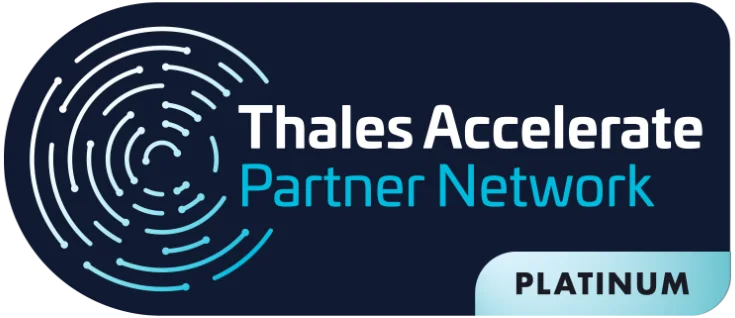Since users have started connecting through unmanaged mobile devices and internet-connected business applications, there is a growing need to implement more efficient security strategies, such as Zero Trust.
Zero Trust is a concept put forward by Forrester Research over a decade ago. The fundamental principle of the zero trust approach is least privilege access, which assumes that no user or application should be inherently trusted.
At its core, Zero Trust starts from the basis that everything is potentially hostile to an organization and a secure connection can only be established through efficient management and use of the user’s identity and the context of use, such as the user’s location, the security posture of the endpoint device and the application or service requested.
Zero Trust extends protection and enables modernization
Zero trust is not simply about a single technology, such as identity and remote user access or network segmentation. Zero Trust is a strategy, a foundation on which to build a cybersecurity ecosystem.
Basically, there are three principles in its definition:
Terminate all connections
Many technologies, such as firewalls, use a “pass-through” approach, meaning that files are sent to their recipients at the same time they are being inspected.
If a malicious file is detected, an alert will be sent, but it can often be too late. In contrast, zero trust terminates all connections so it can hold and inspect unknown files before they reach the endpoint.
Built on a proxy architecture, Zero Trust operates inline and inspects all traffic at line speed, including encrypted traffic, performing deep data and threat analysis.
Protect data using context-based policies
Zero trust applies user identity and device posture to verify access rights, using granular business policies based on context, including user, device, requested application, as well as content type.
Policies are adaptive, meaning that as context changes, such as the user’s location or device, user access privileges are continually re-evaluated.
Reduce risk by eliminating the attack surface
Zero Trust connects users directly to the apps and resources they need and never connects them to networks.
By enabling one-to-one connections (user-to-app and app-to-app), zero trust eliminates the risk of lateral movement and prevents a compromised device from infecting other network resources.
With Zero Trust, users and applications are invisible to the Internet, so they cannot be discovered or attacked.
Benefits of adopting Zero Trust
-
Effectively reduces business and organizational risk
As we saw earlier, Zero Trust assumes that all applications and services are malicious and not allowed to communicate until they can be positively verified by their identity attributes.
These are immutable properties of the software or services themselves that meet pre-defined trust principles, such as authentication and authorization requirements.
Zero trust therefore reduces risk because it reveals what is on the network and how those assets are communicating. In addition, as baselines are created, a Zero Trust strategy reduces risk by eliminating over-provisioned software and services and continuously checking the “credentials” of each communicating asset.
-
Provides access control in cloud and container environments
Security professionals’ biggest fears about moving to and using the cloud are loss of visibility and access management.
With a zero-trust security architecture, security policies are enforced based on the identity of the communication workloads and tied directly to the workload itself.
This way, security remains as close as possible to the assets that require protection and is not affected by network constructs such as IP addresses, ports and protocols. As a result, the protection not only follows the workload where it tries to communicate, but remains unchanged even when the environment changes.
-
Helps reduce the risk of a data breach
As zero trust is based on the principle of least privilege, every entity, user, device, workload, is considered hostile.
As a result, each request is inspected, users and devices are authenticated and permissions are assessed before “trust” is granted, and this “trustworthiness” is continually reassessed as any context changes, such as the user’s location or the data being accessed.
If an attacker gains a foothold in the network, or cloud instance through a compromised device or other vulnerability, that attacker will not have the ability to access or steal data as a result of being untrusted.
In addition, there is no ability to move laterally due to the zero trust model of creating a “secure segment of one”, meaning there is nowhere an attacker can go. Access is always blocked.
-
Supports compliance initiatives
Zero trust protects all users and workload connections from the internet, so they cannot be exposed or exploited. This invisibility makes it simpler to demonstrate compliance with privacy standards, such as the General Data Protection Law (GDPR) and other regulations, and results in fewer findings in audits.
Additionally, with Zero Trust segmentation (micro-segmentation) in place, organizations have the ability to create perimeters around certain types of sensitive data using fine-grained controls that keep regulated data separate from other unregulated information.
When it comes time for an audit, or in the event of a data breach, a zero-trust segmentation strategy provides superior visibility and control over flat network architectures that provide privileged access.
Secure your environment with SafeNet Trusted Access and Zero Trust
Thales in partnership with Eval, offers strong and effective authentication services that enable enterprises to pursue consistent authentication policies across the organization, automating and simplifying the deployment and management of a distributed property of tokens, while protecting a broad spectrum of resources, whether on-premises, cloud-based or virtualized.
SafeNet Trusted Access is a cloud-based access management service that combines the convenience of the cloud and web single sign-on (SSO) with granular access security.
By validating identities, enforcing access policies and applying Smart Single Sign-On, organizations can ensure secure and convenient access to multiple cloud applications from one easy-to-navigate console.
Cloud-based applications play a vital role in meeting the productivity, operational and infrastructure needs of the enterprise. However, the challenge of managing users’ multiple cloud identities increases as more cloud applications are used.
Each new service added to an organization’s cloud makes unified visibility of access events harder to achieve and increases compliance risk.
Users struggle to maintain countless usernames and passwords, while help desk tickets requiring password resets abound. And with cloud applications protected by default with only weak static passwords, the risk of a data breach increases.
Benefits of SafeNet Trusted Access
SafeNet Trusted Access prevents data breaches and helps organizations comply with requirements and regulations, such as the General Data Protection Law (LGPD), allowing them to migrate to the cloud in a simple and secure way. The most important features include:
- Flexibility in deployment: on-premise or cloud-only installation, migration possible at any time;
- Reduced help desk costs through SAS self-service portal and high degree of automation;
- Protection for internal and cloud applications;
- Quickly implemented, easy to operate and flexibly scalable;
- Strong authentication for almost all platforms and applications;
- Integration through SAML, agents, RADIUS or APIs;
- Multiple authentication factors for every need: hardware and software tokens, SMS and more;
- Automated registration via web and email;
- Multi-client capability: centrally across the enterprise, also with delegation;
- Certified processes: ISO 27001, SSAE 16 SOC-Type 2.
SafeNet Trusted Access from Thales brings security to access and authentication using the Zero Trust strategy
With SafeNet Trusted Access, customers can authenticate API access, reducing the threat surface in an organization’s IT environment.
While API adoption is increasing, many organizations still rely on on-premise systems to run their business (e.g. HR and ERP systems), making consistent access management and authentication increasingly complex, while negatively impacting user experience.
Many organizations face increasing complexity in their IT environments
Many organizations face the challenge of applying modern, uniform authentication and access management to these applications.
SafeNet Trusted Access reduces the risk of data breaches by providing organizations with a wide range of authentication and policy-based access. This gives companies the agility to provide flexible security and authentication across their environment.
Combined with best-in-class authentication and access security, customers can now overcome complexity, reduce access silos and thrive as they undergo their digital and cloud transformation.
About Eval
With a track record of leadership and innovation dating back to 2004, Eval not only keeps up with technological trends, but we are also in an incessant quest to bring news by offering solutions and services that make a difference to people’s lives.
With market recognized value, Eval’s solutions and services meet the highest regulatory standards for public and private organizations, such as SBIS, ITI, PCI DSS, and LGPD. In practice, we promote information security and compliance, increase companies’ operational efficiency, and reduce costs.
Innovate now, lead always: get to know Eval’s solutions and services and take your company to the next level.
Eval, safety is value.







